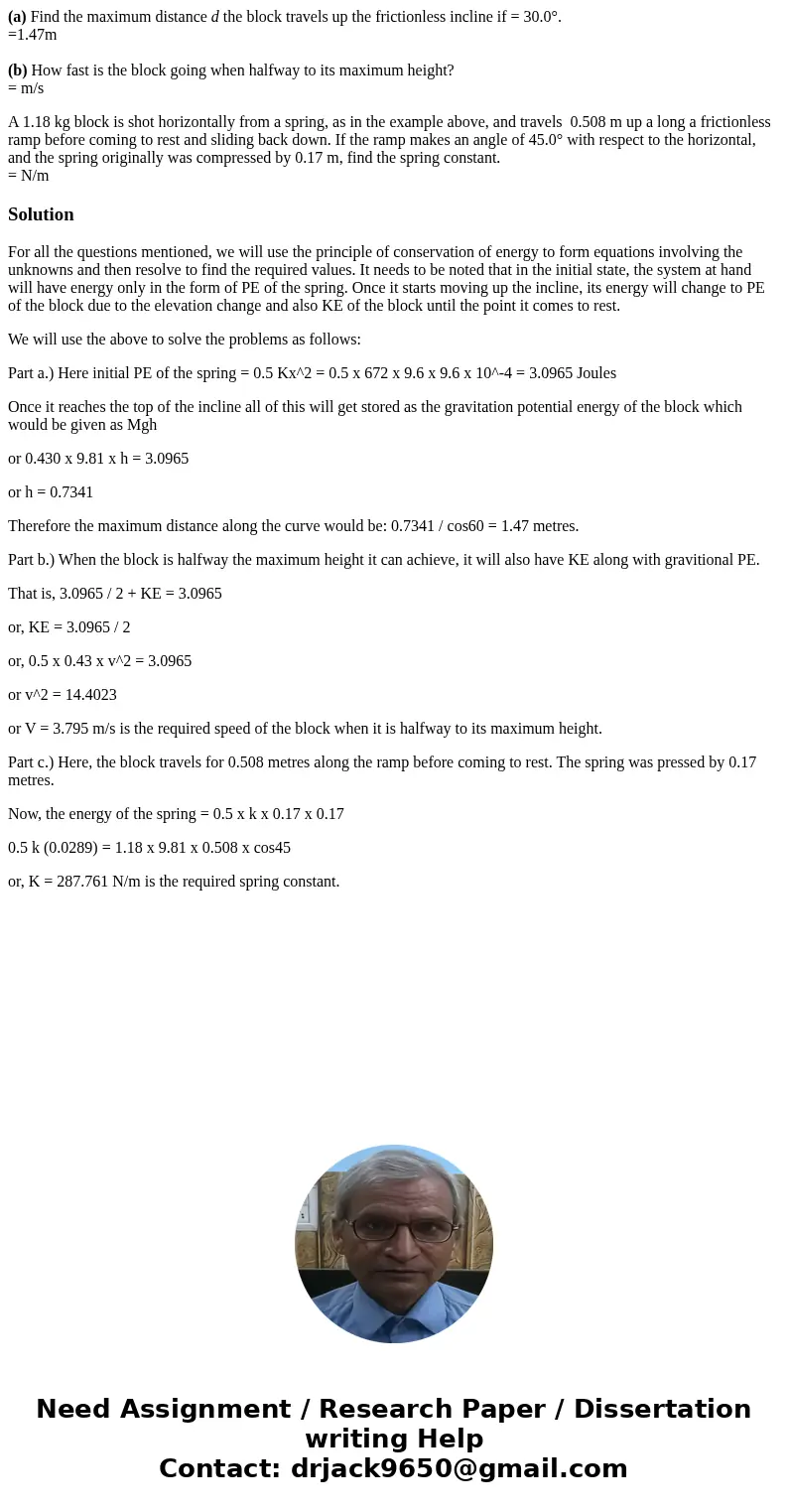a Find the maximum distance d the block travels up the frict
(a) Find the maximum distance d the block travels up the frictionless incline if = 30.0°.
=1.47m
(b) How fast is the block going when halfway to its maximum height?
= m/s
A 1.18 kg block is shot horizontally from a spring, as in the example above, and travels 0.508 m up a long a frictionless ramp before coming to rest and sliding back down. If the ramp makes an angle of 45.0° with respect to the horizontal, and the spring originally was compressed by 0.17 m, find the spring constant.
= N/m
Solution
For all the questions mentioned, we will use the principle of conservation of energy to form equations involving the unknowns and then resolve to find the required values. It needs to be noted that in the initial state, the system at hand will have energy only in the form of PE of the spring. Once it starts moving up the incline, its energy will change to PE of the block due to the elevation change and also KE of the block until the point it comes to rest.
We will use the above to solve the problems as follows:
Part a.) Here initial PE of the spring = 0.5 Kx^2 = 0.5 x 672 x 9.6 x 9.6 x 10^-4 = 3.0965 Joules
Once it reaches the top of the incline all of this will get stored as the gravitation potential energy of the block which would be given as Mgh
or 0.430 x 9.81 x h = 3.0965
or h = 0.7341
Therefore the maximum distance along the curve would be: 0.7341 / cos60 = 1.47 metres.
Part b.) When the block is halfway the maximum height it can achieve, it will also have KE along with gravitional PE.
That is, 3.0965 / 2 + KE = 3.0965
or, KE = 3.0965 / 2
or, 0.5 x 0.43 x v^2 = 3.0965
or v^2 = 14.4023
or V = 3.795 m/s is the required speed of the block when it is halfway to its maximum height.
Part c.) Here, the block travels for 0.508 metres along the ramp before coming to rest. The spring was pressed by 0.17 metres.
Now, the energy of the spring = 0.5 x k x 0.17 x 0.17
0.5 k (0.0289) = 1.18 x 9.81 x 0.508 x cos45
or, K = 287.761 N/m is the required spring constant.

 Homework Sourse
Homework Sourse